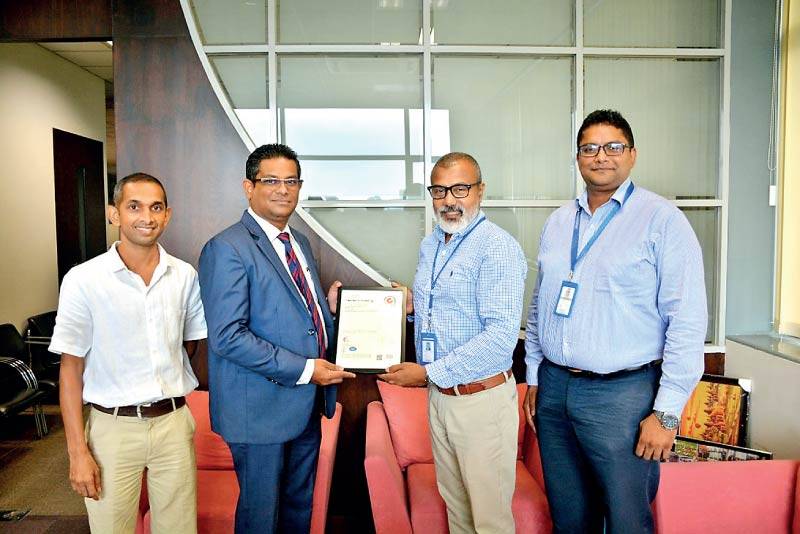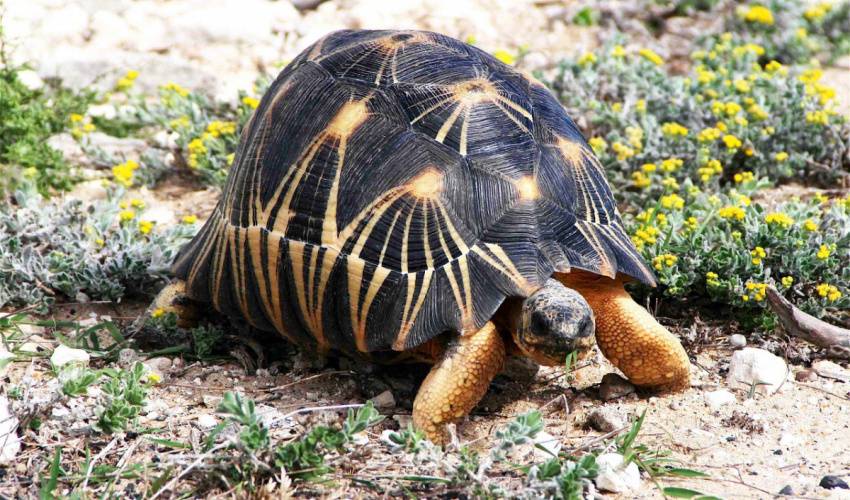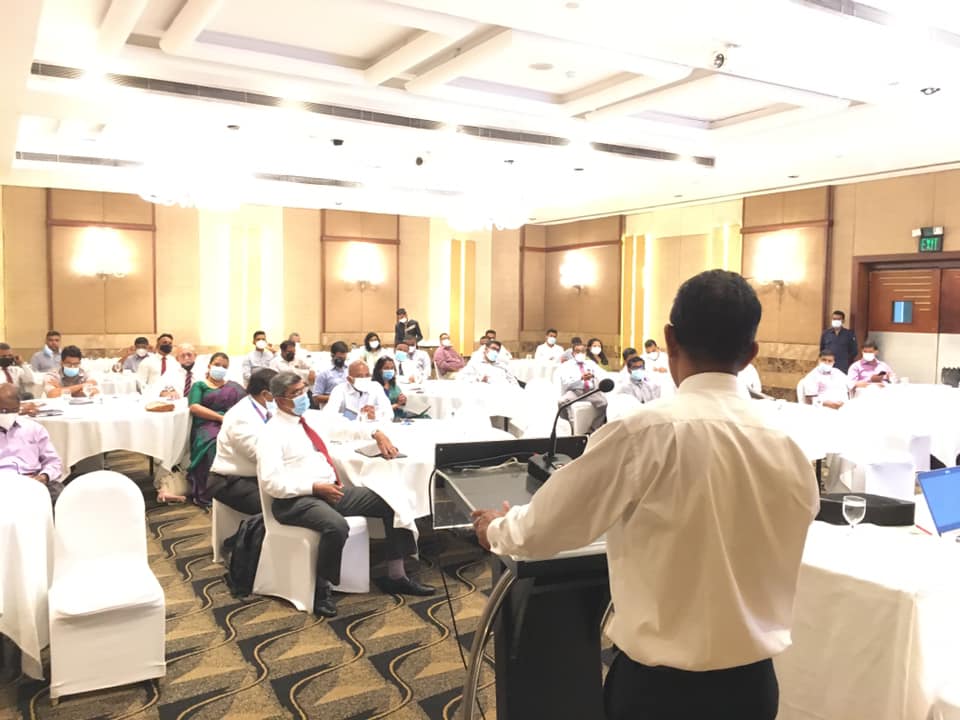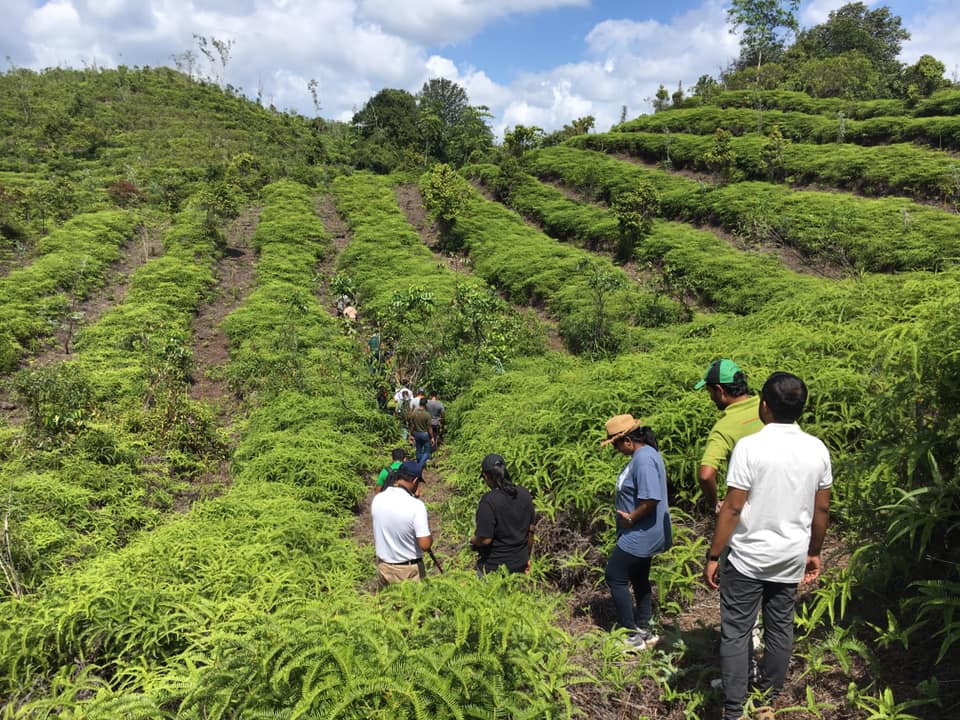
Aitken Spence Travels first to be certified for Occupational Health and Safety
Aitken Spence Travels proved their commitment to upholding exemplary benchmarks in occupational health and safety by becoming the first destination management company in Sri Lanka to receive the ISO 45001: 2018 Occupational Health and Safety (OHS) management certification.
Certified by the SGS United Kingdom Ltd., the scope covered in the assessment includes destination management services, inbound tourism, and activities including support services carried out at Aitken Spence Travels.
This is just one of the ways Aitken Spence Travels adds greater value to its stakeholders and sets benchmarks in the industry. An OHS management system focuses on establishing ongoing, systemic measures to identify and control OHS hazards and risks (including system deficiencies) in the working environment to safeguard the wellbeing of all stakeholders.
“This is yet another important step towards affirming to our employees, customers, partners, and other key stakeholders the value we place on occupational health and safety and our continuous efforts to improve and offer the best services in the industry. I thank the management team for their continuous support and dedication towards achieving this certification which is commendable” commented Aitken Spence Travels Managing Director Nalin Jayasundera.
This is one of the many certifications obtained by Aitken Spence Travels. The company maintains the Travelife Partnership Certification for its operations keeping in line with global sustainable tourism practices and has a longstanding partnership with TUI. Aitken Spence Travels was also the first destination management company to obtain ISO 9001:2008. Furthermore, the company’s operations are ISO 14001:2015 certified for their efforts toward environmental impact control.
Aitken Spence Travels, part of the diversified blue-chip conglomerate Aitken Spence PLC, is a joint venture with TUI Travel PLC, the world’s largest integrated tourism company. The Group’s destination management arm handles inbound and outbound tour packages for groups, FIT (Free Independent Travellers), and the MICE segments (Meetings, Incentives, Conferences, and Exhibitions) which operate in a highly competitive and tumultuous business environment.

Invest In Our Planet
Earth Day is celebrated each year on April 22nd, to create awareness about the vital need to protect our planet from environmental destruction. This year’s theme was ‘Invest in Our Planet’ which indicates the need for quick, urgent actions to shift from a carbon-intensive, destructive development model. It called on governments, businesses, and citizens to act boldly, innovatively, and equitably to save the planet. People world over undertook several eco-friendly activities on Earth Day to demonstrate their commitment to protecting our planet. The day also reminds us how fragile our planet is and how it is important to save it from the global climate crisis that is worsening with each passing day.
Many campaigns and events were conducted this year with a particular focus on addressing the global climate crisis. Biodiversity Sri Lanka (BSL) celebrated Earth Day this year by raising awareness on some useful tips that each and every one of us can do individually to help in healing the planet.
- Walk/ cycle more and drive less – going car-free for at least one day will reduce harmful carbon emissions from using fossil fuels. It is an environmentally sound activity that have been practiced widely in developed countries.
- Plant a tree – trees provide food and oxygen. They clean air and help combat climate change
- Use a refillable water bottle- cut down on what you throw away, promote reuse behavior
- Pick up litter in your community – taking the moment to pick up any litter you see when you are out and do not dispose of your own litter in an improper way
- Make a bird feeder – place outdoor water feeders on these hot days
- Carry reusable plastic or cloth bags – buy fewer plastics
- Start a compost bin – turn your food scraps into nutrient-rich soil for your garden
Companies can invest in strong Environmental and Social Governance systems to reduce their ecological footprint substantially. They are likely to gain marketing advantages due to their sustainability standards over their peers. Some studies show a direct correlation between sustainable business practices, share prices, and business performance. It is imperative that companies incorporate sustainable business practices into their core business operations. Businesses and People, it is high time to invest in our planet!

Comprehensive Study of World’s Reptiles: More Than One in Five Reptile Species are Threatened With Extinction
Picture credits – IUCN
(Source IUCN)
Conservation efforts for other animals have likely helped protect many reptile species, according to a new study led by NatureServe, the International Union for Conservation of Nature (IUCN), and Conservation International. The study, published in the journal Nature, presents an analysis of the first comprehensive extinction risk assessment for reptiles on The IUCN Red List of Threatened Species™, which found that at least 21% of all reptile species globally are threatened with extinction.
For the Nature study, a diverse research team, representing 24 countries across six continents, analyzed the conservation needs of 10,196 reptile species in comparison with mammals, birds, and amphibians. Reptiles in the study include turtles, crocodiles, lizards, snakes, and tuatara, the only living member of a lineage that evolved in the Triassic period approximately 200-250 million years ago.
The research revealed that efforts to conserve threatened mammals, birds, and amphibians are more likely than expected to co-benefit many threatened reptiles. Although reptiles are well known to inhabit arid habitats such as deserts and scrubland, most reptile species occur in forested habitats, where they –and other vertebrate groups – suffer from threats such as logging and conversion of forests to agriculture. The study found that 30% of forest-dwelling reptiles are at risk of extinction, compared with 14% of reptiles in arid habitats.
“I was surprised by the degree to which mammals, birds, and amphibians, collectively, can serve as surrogates to reptiles,” said Dr. Bruce Young, co-leader of the study and Chief Zoologist and Senior Conservation Scientist at NatureServe. “This is good news because the extensive efforts to protect better-known animals have also likely contributed to protecting many reptiles. Habitat protection is essential to buffer reptiles, as well as other vertebrates, from threats such as agricultural activities and urban development.”
The study also highlighted what we stand to lose if we fail to protect reptiles. If each of the 1,829 threatened reptiles became extinct, we would lose a combined 15.6 billion years of evolutionary history—including countless adaptations for living in diverse environments.

The Private Sector takes the lead in Extended Producer Responsibility (EPR) for Plastic Waste Management
The evolution of a dialogue on EPR for plastic waste management in Sri Lanka is considered a landmark, for finding common ground among stakeholders with divergent views on the subject. The Sri Lankan private sector was initially dissatisfied when a state-led EPR approach was mooted. Subsequently, even in the absence of legal provisions to impose EPR in the country, continuous and active involvement of the sector in developing and executing an industry-led, country-wide, plastic-type focused voluntary EPR scheme has led to a useful way forward.
Leading this dialogue, over the past few years, the Ceylon Chamber of Commerce (CCC), with the technical support of Biodiversity Sri Lanka, has been sensitizing the private sector on the critical need of introducing an EPR solution for addressing rapidly growing plastic waste in the country. With strategic direction provided by a multi-stakeholder steering committee, an EPR Roadmap was developed using a consultative approach. In this process, several sectoral stakeholder consultations targeting key industry sectors yielded some useful policy-level inputs and insights. Simultaneously, a review of global EPR practices from six countries helped to identify applicable EPR policy instruments for Sri Lanka.
The EPR Roadmap proposed three likely instruments for plastic waste management as applicable to Sri Lanka: A Deposit Refund System, an Advance Disposal Fee-based System, and a Mandatory Reporting and Collect-back System. The Roadmap also contained several over-arching proposals required to establish an efficient plastic waste management regime in Sri Lanka. A Perception Survey revealed that 90% of both government and private sector respondents endorsed the Roadmap whilst 80% of private-sector respondents expressed willingness to commit resources for the implementation of the preferred Mandatory Reporting and Collect-back System. These findings were complemented by Market and Socio-Economic Studies which provided useful information on the plastics value chain and consumer perceptions on handling plastic waste. Additionally, several key informant interviews provided more information and addressed information gaps. A consumer survey targeting 500 households across selected urban areas of the country, provided an understanding of the dynamics of household-level plastics waste management.
In moving forward, it is imperative to facilitate a continuous, transparent dialogue between all stakeholders in working out the finer details of the preferred Mandatory Reporting and Collect-back System. The Industrial sector is an effective intermediary in facilitating such a dialogue. The introduction of sudden and ad-hoc government decisions in the recent past, banning several plastic categories has contributed to many a debate among the state and private sectors on the merits and demerits of using a more holistic policy application. If EPR policy signals at the national level are not consistent, a situation may arise when the private sector may be reluctant to undertake long term investments to manage their plastic footprint. Contrary to empirical evidence, our studies show that Sri Lankan companies prefer individual EPR implementation strategies and approaches for plastic waste management, using a facilitated process under the guidance of the Government of Sri Lanka and industry associations. They can then employ their own innovative, plastic waste collection methodologies and channels and can also demonstrate commitment to minimizing plastic leakage to the environment, creating a positive brand image.

Bio credits: Incentives for Inclusive Biodiversity Conservation
(Read the full paper by Ina Porras and Paul Steele (IEED) 2019)
Tackling biodiversity loss is a growing priority for human survival. Introducing incentives for positive actions could play a key role in helping to reverse this loss. This paper explores the potential of using a novel approach to promote biodiversity conservation. Biodiversity credits or ‘bio credits’ are coherent units of measurement that track conservation actions and outcomes and can help improve tracking and transparency. Well-designed, they can make investments in biodiversity management more financially attractive, for example, by attracting private-sector finance. They can be used by governments to monitor their actions and report on biodiversity commitments. And as much of the world’s biodiversity and its richest biodiversity spots are often found in remote and poor tropical regions, we also argue that bio credits need to be inclusive, and founded on fair benefit sharing principles.
Tackling biodiversity loss is emerging as a growing priority for human survival. New data has revealed unequivocal links to ecological and economic tipping points. As a result, there is a renewed sense of urgency for institutions and systems to protect, restore and enhance biodiversity. As with carbon credits to control greenhouse gas (GHG) emissions, biodiversity credits – ‘bio credits’ – are a way to finance biodiversity improvements. Bio credits can be measured, tracked, and sold to raise funding which can be used as incentives for biodiversity conservation. Special attention in its design can also result in (inclusive) solutions to deliver local benefits to poor households. Bio credits are similar in the design to biodiversity offsets (used in the USA, Australia and the UK, for example). But they differ in use.
Bio credits are not designed to offset or compensate for actions with negative impacts on biodiversity elsewhere. In this sense, they are less contentious and do not depend on strict (and often unfeasible) legislation. In addition, few countries have national systems in place to promote and monitor biodiversity offsets. Even fewer of these systems are applicable to developing countries, where local inclusion and fairly sharing benefits are particularly important. This discussion paper examines the potential for developing countries to put in place a national scheme of bio credits that can be domestically and internationally sold, and which promotes fair benefit sharing with rural populations. The paper draws lessons from related incentives schemes which exist in carbon markets, especially REDD+ and voluntary community carbon offsets, as well as from wider examples of payments for ecosystem services (PES) schemes. Much can be learned from experiences with these related incentive schemes, which include species conservation banking (USA), eco-credits (Germany), a national PES scheme (Costa Rica), and wildlife credits (Namibia).
Based on the literature reviewed, we identified ways to develop a national bio credit scheme in a developing country. To date, no such bio credit scheme exists, but this paper sets out four key building blocks or characteristics needed to implement such a scheme:
- Simple, transparent, and cost-effective design
- Enabling policy from the government for implementation
- Market engagement to attract buyers and generate sales, and
- Inclusive and fair benefits for local people.
With the growing emphasis on biodiversity in the run-up to the 2020 United Nations Biodiversity Conference, it is likely that interest in incentive-type mechanisms such as bio credits will only grow. Done properly, bio credits may develop into a viable option to improve biodiversity conservation and reduce poverty.



